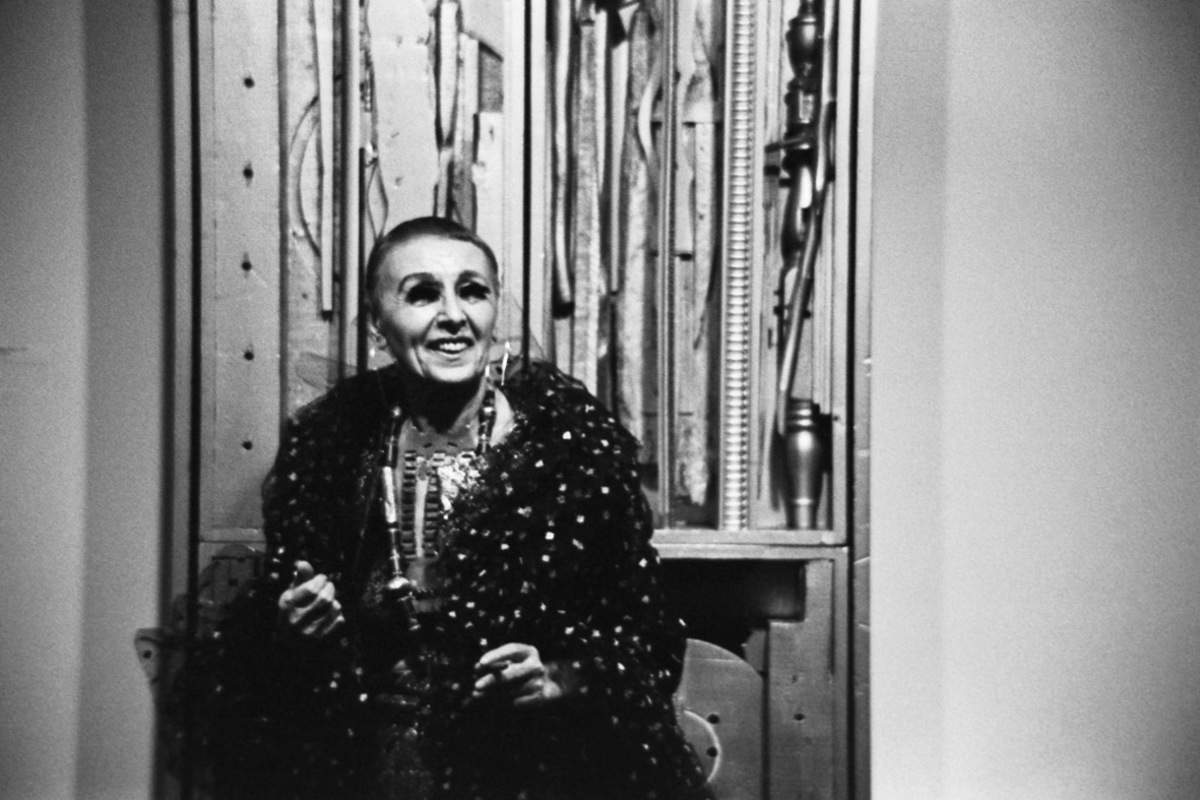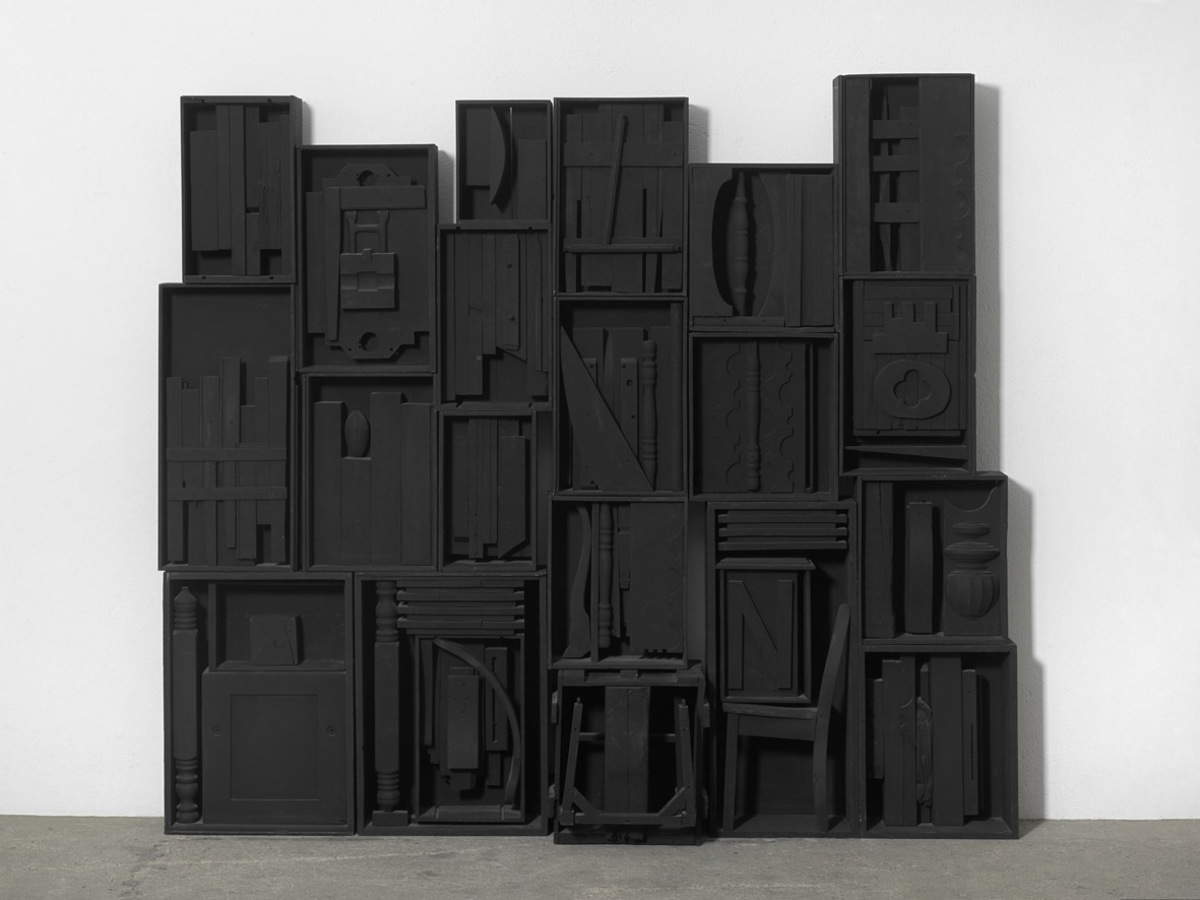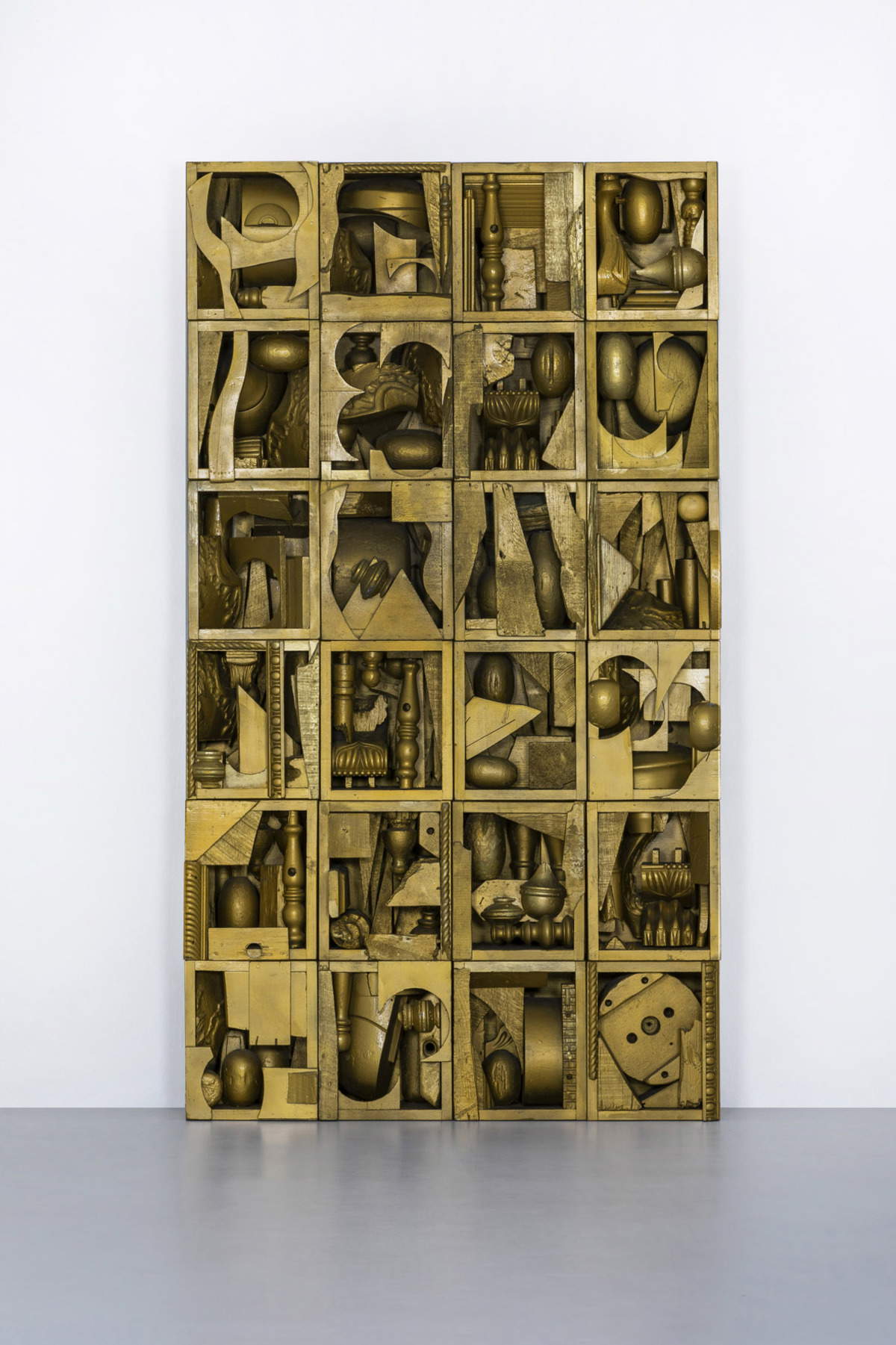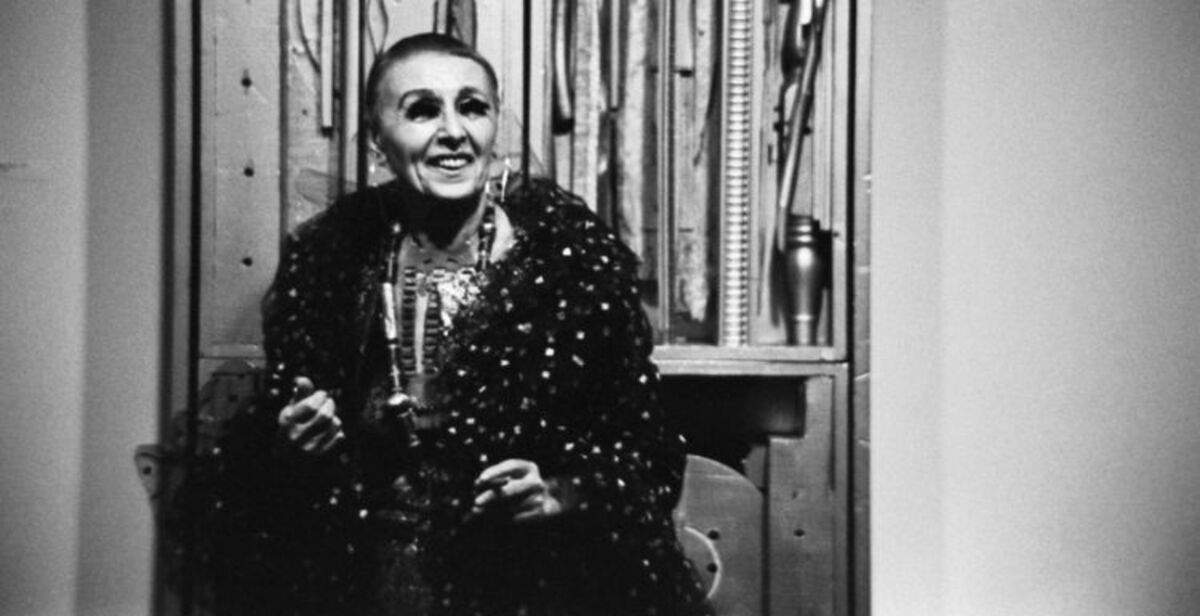From May 30 to July 2025, Palazzo Fava in Bologna will host the first exhibition ever dedicated in the city to Louise Nevelson (Kiev, 1899 - New York, 1988), a Ukrainian naturalized U.S. artist who is among the most recognized of the 20th century. The exhibition, curated by Ilaria Bernardi and promoted by the Genesi Association in collaboration with Fondazione Cassa di Risparmio in Bologna and Opera Laboratori, is part of the Genus Bononiae cultural program and will be held in the frescoed rooms on the piano nobile of Palazzo Fava. Louise Nevelson, born as Lija Isaakivna Berljavs’ka, emigrated at a very young age to the United States to join her father, who had fled the persecutory climate against Jews. The migration experience and the need to emancipate herself deeply marked her human and artistic path. Divorced in 1941 and the mother of a son, she chose to devote herself entirely to art at a time when the role of wife and mother was considered exclusive. As early as the 1950s, her work became part of MoMA’s collections, and in 1962 she was among the artists represented in the U.S. pavilion at the Venice Biennale. Five years later, the Whitney Museum dedicated an extensive retrospective to her. “Louise Nevelson repurposes in her work a feminist analysis of gender inequality, producing authentically feminine art,” says exhibition curator Ilaria Bernardi.
On the 120th anniversary of Nevelson’s arrival in the United States, the Bologna exhibition also inaugurates a cycle of exhibitions sponsored by the Genesis Association dedicated to historicized artists whose work anticipates, in terms of content and vision, crucial issues today. In Nevelson’s case, memory, the feminine condition and the transformation of matter are at the center of an exhibition project that aims to offer new keys to interpretation through a thematic layout. The exhibition is divided into five rooms, each dedicated to a different typological-structural category of Nevelson’s work, configuring itself as the first exhibition to follow this approach. The itinerary opens in the Jason Room with the famous freestanding sculptures in black-painted wood, mostly untitled, such as the imposing 1964 work Untitled. True totemic structures, these works hold objects of various origins, hidden inside monumental bookcase-like constructions.


In the second room, the Sala Rubianesca, the focus shifts to another recurring typology: the so-called doors, made in 1976. In these works, Nevelson embeds parts of common objects, such as chairs or backs, to the wooden planks, transforming them into suspended surfaces with a strong symbolic charge. One of the works in the room, dated 1959-60, is considered a possible antecedent to the series. The third room, the Aeneas Room, houses flat black sculptures, also suspended from the wall, composed of typefaces. In the center of the room sits Sky Totem (1973), a freestanding sculpture with an evocative title. Here the landscape becomes a recurring metaphor, as in Tropical Landscape (1975) or City Series (1974), revealing the artist’s attention to the invisible dimension of reality.
A nucleus of works on paper is presented in the Albani Room: collages and assemblages of small to medium size, with shades ranging from black to ochre. Made with unconventional materials - raw wood, metal, cardboard, aluminum film - these works highlight the creative process defined by Carla Lonzi as “destruction-transfiguration,” in which the transformation of everyday waste becomes an artistic act. The itinerary continues in the Cesi Room with a group of unpublished etchings dating back to 1953, juxtaposed with 1975 silkscreens rarely exhibited to the public. A 1978 video interview with Louise Nevelson, recorded at the opening of the Chapel of the Good Shepherd in New York, is shown in this same room. The artist designed this space entirely with wood sculptures painted white, marking a symbolic transition from dark matter to a luminous dimension, according to an alchemical vision. The transformation finds full realization in the final room, the Carracci Room, where gold dominates. Works such as The Golden Pearl (1962) testify to the most advanced phase of Nevelson’s research, in which precious color takes the place of the original black, radically transforming matter and imagery. Alongside this sculpture, large wall-hung collages, also in painted wood, will also be exhibited.

Accompanying the exhibition will be a monograph published by Silvana Editoriale, edited by Ilaria Bernardi. The volume inaugurates a new editorial series by the Genesis Association dedicated to the artists featured in the monographic exhibitions scheduled. The exhibition project is supported by Eni and Intesa Sanpaolo as main sponsors, with contributions from Heritage and the Pirelli Foundation. It also received the patronage of Università Cattolica del Sacro Cuore, FAI Ponte tra culture, Gariwo Foundation and RFK Human Rights Italia. The exhibition component will be complemented by an articulated educational program, with guided tours and workshops designed for children, teens and adults.
The approach will be inclusive and participatory. Volunteers from the Bologna-based FAI Ponte tra culture group will participate in the initiative, sharing stories and personal reflections in line with the themes proposed by the exhibition. The group is part of FAI’s national project aimed at promoting intercultural dialogue through cultural heritage. Finally, the Genesis Association has commissioned Hidonix to create a free app, available on mobile device stores, which will offer in-depth content on the exhibition, educational activities and future projects.
Opening hours: Tuesday-Sunday, 10 a.m.-7 p.m. - Last admission at 6 p.m.
Weekly closing: Monday
Tickets: full price: € 10.00; reduced price: € 5.00
 |
| Louise Nevelson on display in Bologna, sculpture as a language of memory and emancipation |
Warning: the translation into English of the original Italian article was created using automatic tools. We undertake to review all articles, but we do not guarantee the total absence of inaccuracies in the translation due to the program. You can find the original by clicking on the ITA button. If you find any mistake,please contact us.